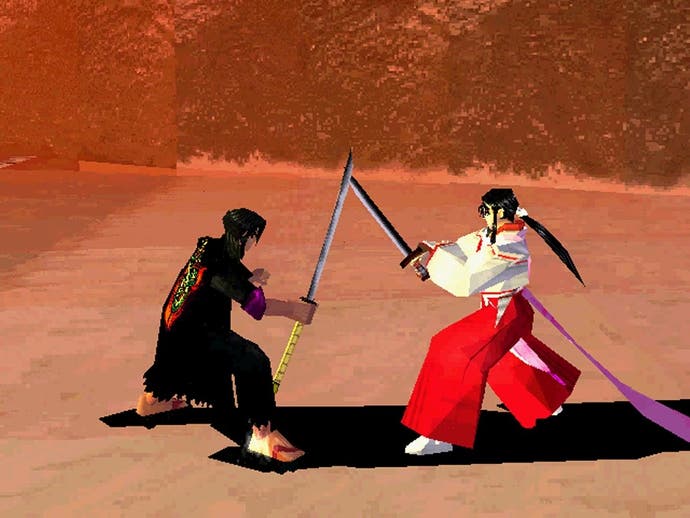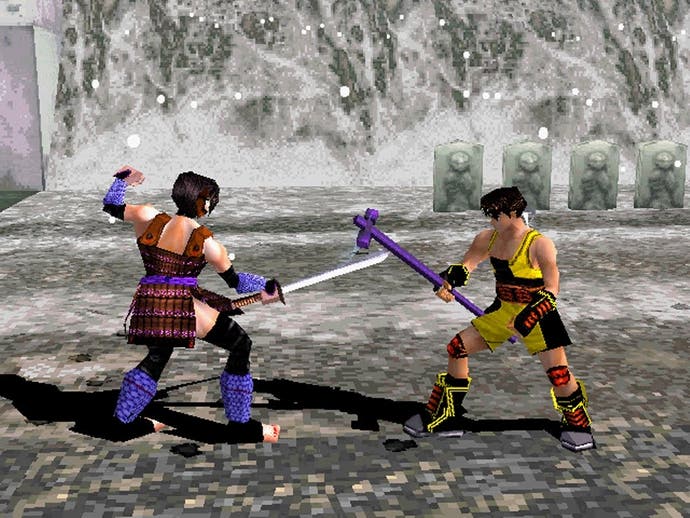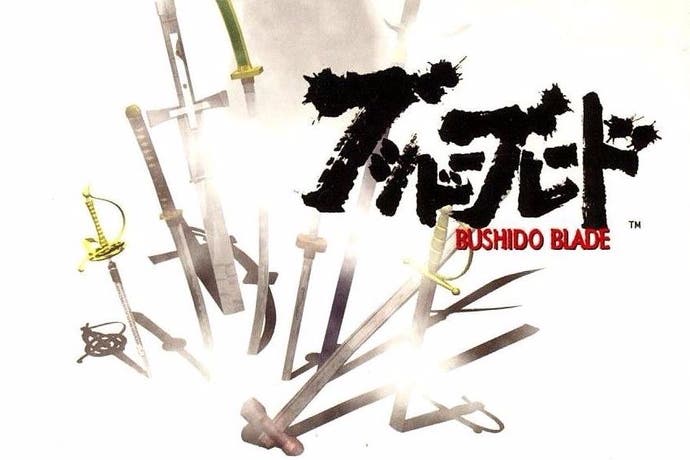20 years on, Bushido Blade remains a fighting game masterpiece
Just a flesh wound.
Even today, on the 20th anniversary of its Japanese launch, Bushido Blade feels surprising, revolutionary. Its grand invention was hiding in plain sight all along, of course. Shun the comic book fracases that littered the bountiful arcades of the day. Forget about screen-filling flaming uppercuts, magical fireballs and those screen-straddling health bars. Instead, slow the fighting game to reality's pace, where violence is typically preceded by a lengthy coiling of springs, its sudden release then followed by the brittle silence of the aftermath.
Here, in feudal Japan, with the shaft of a cold blade pressed in your palm, a single swipe is enough to bring everything to an end. Bushido Blade is the ultimate one-hit kill combat simulator, where the stakes are stretched so high, that a round (there's only ever one round; you fight to death) offers the medium's most intense and memorable competitive face-offs. Snow falls. A cricket chirrups. A shamisen twangs. Then, at last, nothing but the high-pressure hissing of lifeblood, spilled from a wound, misting the air.

What a dazzling debut. Others followed, from its somewhat lacklustre sequel (also developed by Lightweight, a developer part owned by RPG-creator Squaresoft) to the Kengo series of fighters to, most recently, Divekick, a 2D fighting game, which borrowed Bushido Blade's stakes, but framed them with comedy, rather than tragedy. Still, nothing quite matched the magnificence of Bushido Blade, a game that sold almost half a million copies in Japan, and not just because it was the first. There is surprising depth and nuance to a game in which a match can be ended in less than five seconds, by players able to take their opponent by surprise, with a deep forward step followed by an overhead downward blow to the head, with a 10lb sledgehammer.
Here, a fighter can lose the use of an arm or a leg with a well-aimed swipe from their foe. The controls are instantly legible. Each of the six characters, from the Lone Wolf-esque master swordsman Utsusemi, through to Red Shadow, a Russian ex-ninja who compensates for her relative lack of power with whip-quick speed, can cycle between three stances: high, middle and low. In each, you have just three basic attacks, which aim for a different section of the body: head, torso or legs. You block by default, so the only time you're exposed is when attacking.
As you shuffle forwards and backwards in each match's taut opening seconds, you must make a decision: will you go for the deathblow, or instead take your foe down limb by limb, with a strike that renders their left arm useless, or a blow to the right leg which forces them to fight while resting on one knee. Even with the PlayStation's crudely rendered character models, on which you can almost count the constituent polygons, the visceral shock of violence is made clearer than in any Tekken or Street Fighter. Here your task is to disable and then destroy a human body. You are forced to face up to this reality.
Rather than linger on the violence, however, Lightweight takes a respectful, thoughtful approach. No screaming guitars or yowling choir to back the drama. There is almost no soundtrack to fights, and instead there's a silence, one that is made all the louder by these pastoral settings. After each fight, your character will typically kneel by the body of the person whose life they've taken, before issuing a mournful soliloquy.

It's not all so earnest. Bushido Blade, which doubled-down on physical realities, also worked precisely because of the technical limitations of the time. Remade today, Bushido Blade would be an online affair. The game, however, requires the human intimacy and proximity afforded by the sofa, that plinth for all local multiplayer. The context in which the game was played reflected its on screen action. Players could psyche one another out in the room, and well as on the screen. Some rounds would be defined by fear and trepidation. Then, after a series of bruising defeats, someone might make the lunge for reckless risk-taking, backed by the chatter and trash talk of the front room.
There was comic relief too. Press the trigger and your character unlocks from their forward facing pose. Now you are free to sprint around the environment, head ducked. The sight of two feudal samurai, running in opposite directions at full pelt in the snow, perhaps while their controllers hurl insults at one another, two decades have not dulled its humorous edge. Still, it's perhaps understandable that this approach didn't take on. While realism in driving games or military sims is highly prized, if every one-on-one bout in a fighting game were to end with a broken ankle or ruptured spleen, the genre's appeal would be necessarily limited.
Bushido Blade's maverick approach failed to inspire other fighting game developers to follow suit, and indeed, its disappointing sequel (which introduced guns, a disruptive influence in any recipe) revealed that perhaps the idea had been perfected in Lightweight's first swing. In 1997 Tekken was the prizefighter of the moment, a game that, at all but its highest levels of competition and much more than rival Street Fighter, encouraged players to mash at the buttons in hope of a victory. Bushido Blade offered its grand and unflinching opposite: a game with an in-built defence against recklessness and button mashing. For all its crude polygons, for its tiny character roster, for its smeary CGI videos, it remains a jewel.

